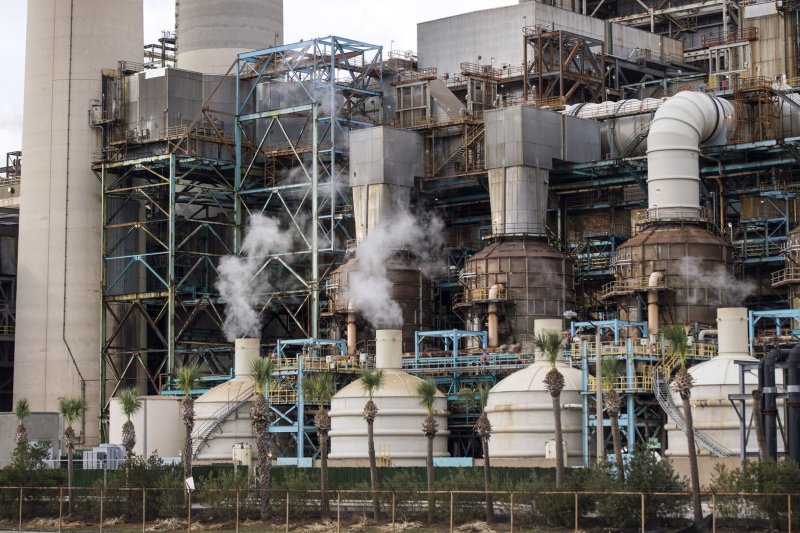Coal is in the rise in the first months of the Trump presidency, but renewable energy showing momentum in its own right. File photo by Kevin Dietsch/UPI |
License Photo
Aug. 9 (UPI) -- Coal exports from the United States increased, but are slowing down, while renewable energy is on pace for short-term growth, the federal government reported.
The U.S. Energy Information Administration reported coal exports were around 37 million tons total for the first five months of the year, a level that's 60 percent higher than the same time last year.
U.S. President Trump in his first weeks in office took aim at environmental rules he said threatened the coal industry. According to the White House, more than 600 coal mines closed in the six years ending in 2015, production declined by more than 177 million tons and more than 36,000 jobs were lost "without any sign of relief."
On the campaign trail, Trump said he would unravel regulations enacted by his predecessor and has since been "steadfast in his commitment," a statement read.
The EIA said the increase in coal exports contributes to an 8 percent increase in production in 2017. Growth slows, however, and by next year, coal production is expected to increase about 1 percent.
For coal states, the Trump administration's preference for fossil fuels has lead to short-term gains. Coal-rich West Virginia reported the second-fastest rate of growth in the country during the first quarter and a 20 percent increase in mining activity.
Gov. Jim Justice said he was vindicated by the rebound, adding last week the spike in coal activity was one he predicted.
"This is good news but we are not out of the woods just yet because the energy jobs haven't materialized in West Virginia just yet," he said in a statement. "We need to be in a position to capitalize on this coal rebound, and continue to look to diversify our economy while looking for ways to get more miners back to work."
On the front, the EIA reported the amount of electricity generated by wind power in the country this year could jump about 8 percent from 2016 and expand another 16 percent by the end of 2018. For solar, the forecast for the end of 2017 is 31 percent higher than the previous year and next year should expand another 10 percent.
Coal by far dominates the West Virginia energy sector. By comparison to other resource-rich states, the Wind Catcher wind farm in Oklahoma, one of the largest oil producers in the country, will be the second largest in the world once its up and running at peak capacity.















